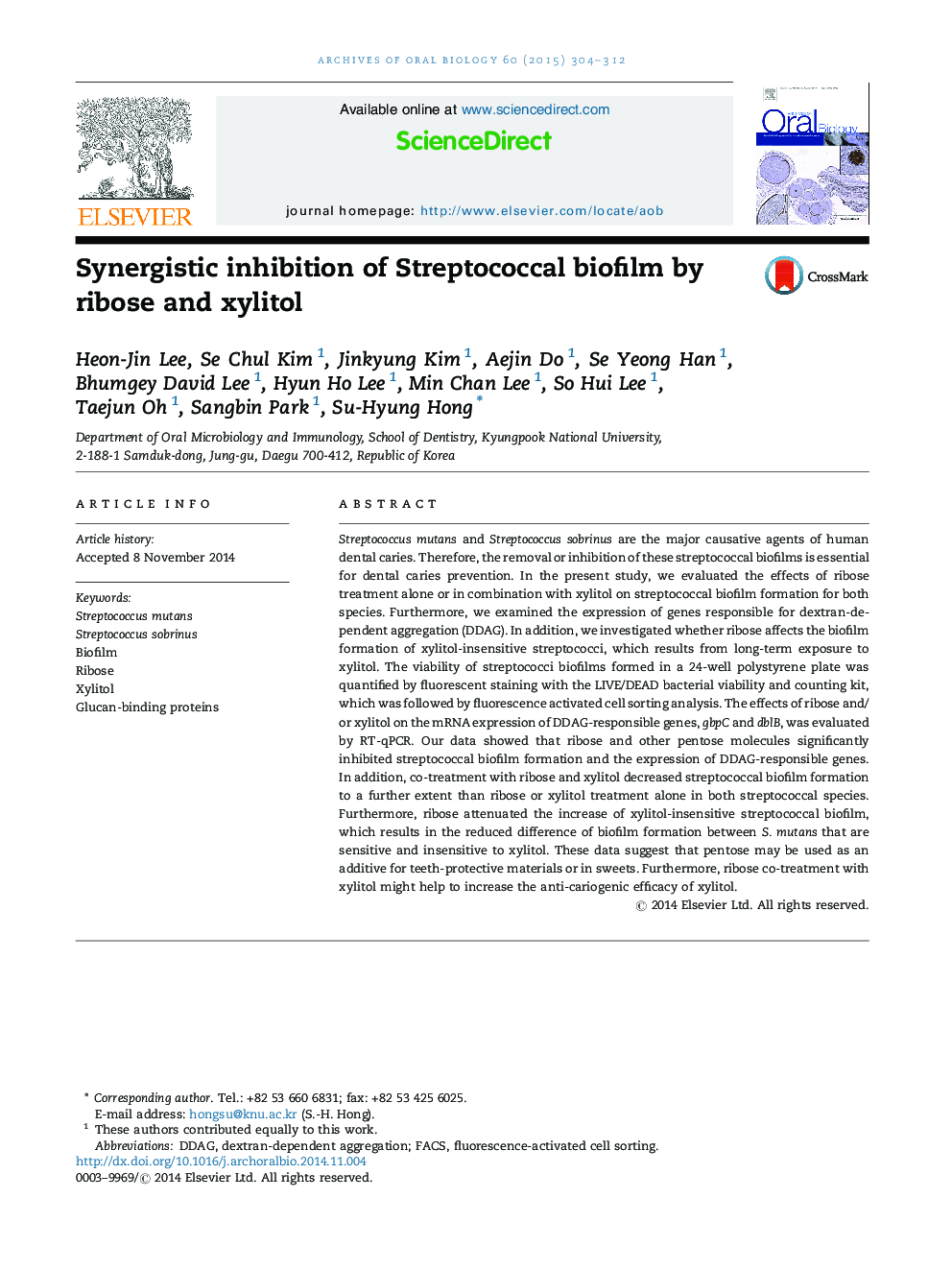| کد مقاله | کد نشریه | سال انتشار | مقاله انگلیسی | نسخه تمام متن |
|---|---|---|---|---|
| 3120840 | 1583303 | 2015 | 9 صفحه PDF | دانلود رایگان |
• Biofilm formation of xylitol-resistant S. mutans was greater than that of normal S. mutans.
• Ribose attenuated the increase of xylitol-resistant streptococcal biofilm.
• Ribose may be effective to solve the problems evoked by continuous exposure to xylitol.
Streptococcus mutans and Streptococcus sobrinus are the major causative agents of human dental caries. Therefore, the removal or inhibition of these streptococcal biofilms is essential for dental caries prevention. In the present study, we evaluated the effects of ribose treatment alone or in combination with xylitol on streptococcal biofilm formation for both species. Furthermore, we examined the expression of genes responsible for dextran-dependent aggregation (DDAG). In addition, we investigated whether ribose affects the biofilm formation of xylitol-insensitive streptococci, which results from long-term exposure to xylitol. The viability of streptococci biofilms formed in a 24-well polystyrene plate was quantified by fluorescent staining with the LIVE/DEAD bacterial viability and counting kit, which was followed by fluorescence activated cell sorting analysis. The effects of ribose and/or xylitol on the mRNA expression of DDAG-responsible genes, gbpC and dblB, was evaluated by RT-qPCR. Our data showed that ribose and other pentose molecules significantly inhibited streptococcal biofilm formation and the expression of DDAG-responsible genes. In addition, co-treatment with ribose and xylitol decreased streptococcal biofilm formation to a further extent than ribose or xylitol treatment alone in both streptococcal species. Furthermore, ribose attenuated the increase of xylitol-insensitive streptococcal biofilm, which results in the reduced difference of biofilm formation between S. mutans that are sensitive and insensitive to xylitol. These data suggest that pentose may be used as an additive for teeth-protective materials or in sweets. Furthermore, ribose co-treatment with xylitol might help to increase the anti-cariogenic efficacy of xylitol.
Journal: Archives of Oral Biology - Volume 60, Issue 2, February 2015, Pages 304–312
